
Weekend Report: St. Patrick’s Day
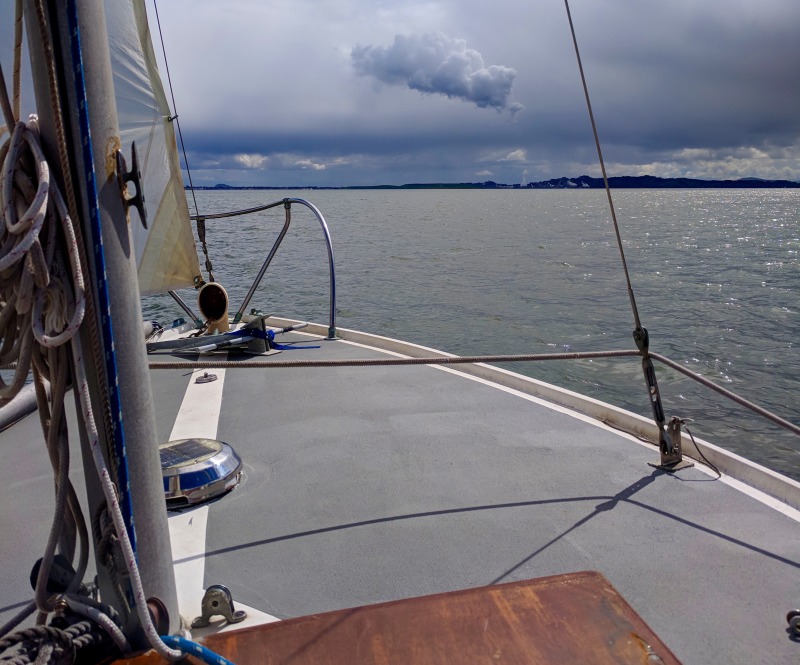
It was definitely going to rain. That was our St. Patrick’s Saturday forecast, and like the ‘Everyone is Irish’ parade happening in San Francisco, we were not the least bit deterred. We suspect that many of you weren’t, either, and as always, we’d like to know how you spent your weekend, especially on St. Paddy’s Day. Got a photo? A story? Send them here. In Marin, the 40% chance of precipitation forecast manifested in charcoal gray chunks of cloud enveloping Mt. Tam as we motored out.
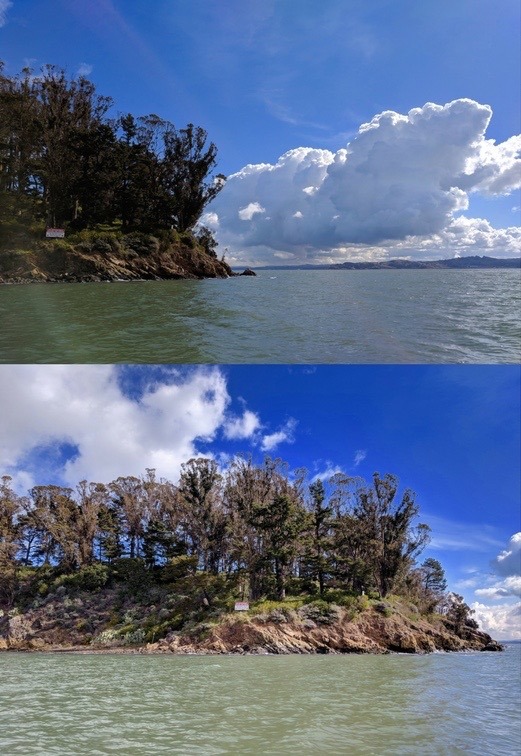
Following the ebb, heading north into San Pablo Bay (SPB) seemed like it might get us out of the way of the coming deluge, but off China Camp, the wind died and a slow drizzle swallowed us. But it was surprisingly pleasant to go below, close the hatch, and drift lazily away from shore and into the emptiness between Marin and Vallejo. We’ve decided that the name of the game for winter sailing is to go with the flow. Wind? Great. No wind? No problem. The motivation for untying the dock lines is, simply, to be out there. Sailing, drifting, and motoring are just logistics to the larger goal. In fact, the windless days often offer the most compelling patterns and light on the water.
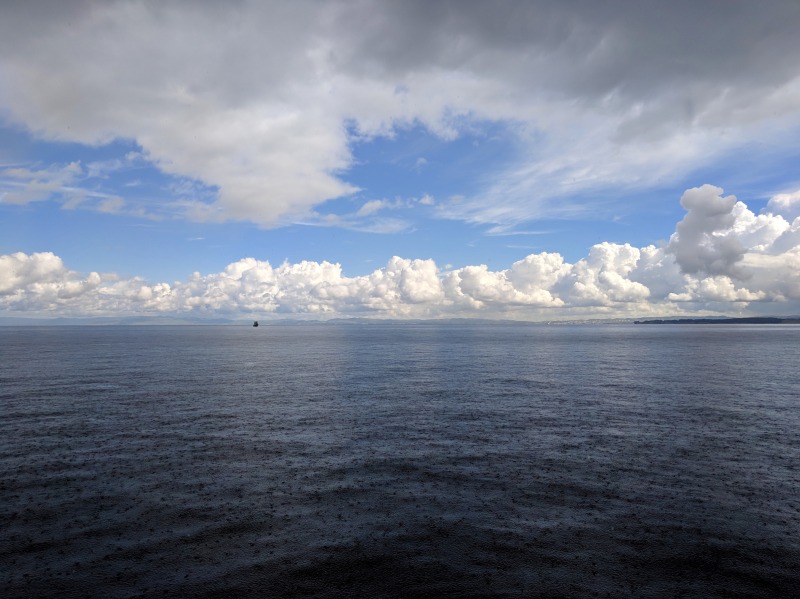
The rain was especially mesmerizing. Each drop was its own elaborate, tiny explosion accented by ripples in the water. We dropped the jib, left up the main, went below and cleared off the bunks, poured a little whiskey, and contemplated the unraveling wonders of the universe. The wind didn’t die for long. Five knots popped up on flat water, and to my discouragement, I had to steer, which I did from inside. Eventually, I took an oar, and managed to hold a straight-ish course into SPB by using the shore as a reverse bearing.
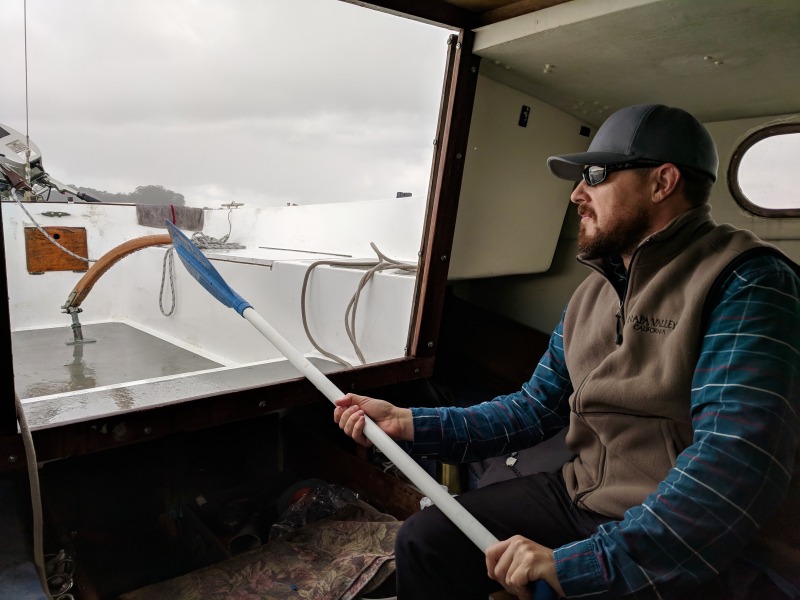
Blue sky wasn’t far behind the rain, and the mountains of the various Marin County preserves were suddenly bathed in crepuscular rays. It was almost an absurdly over-the-top St. Patrick’s Day-looking landscape. All the mountains that rimmed the girth of San Pablo Bay — from Marin, to Sonoma, to Wildcat Caynon in the East Bay — were brilliantly, awe-inspiringly green and sumptuous in the sun.
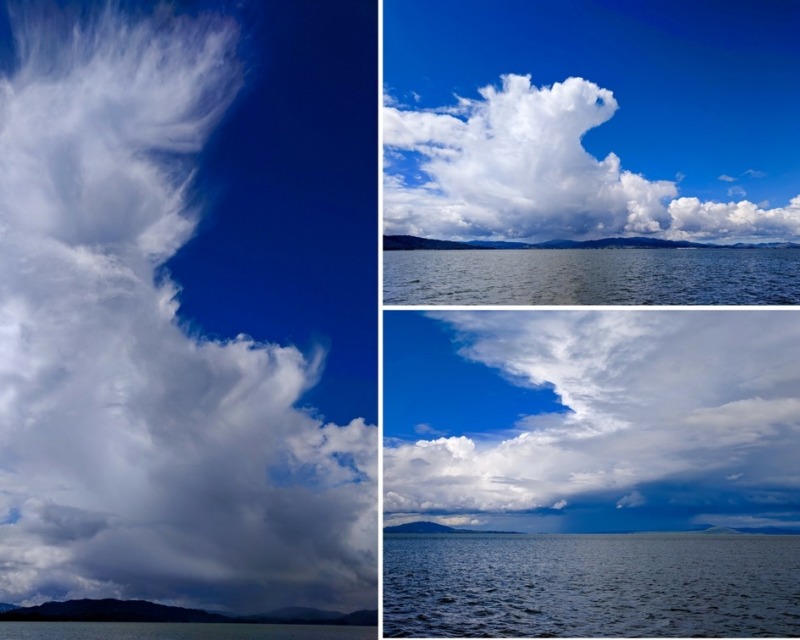
The breeze was in constant flux, but filled in for a while and made for a good beat to Point Pinole. As the sun went in and out through the clouds, the water turned a milky, pale emerald green. The meager beginnings of a rainbow even started to form over Mare Island, but quickly faded.
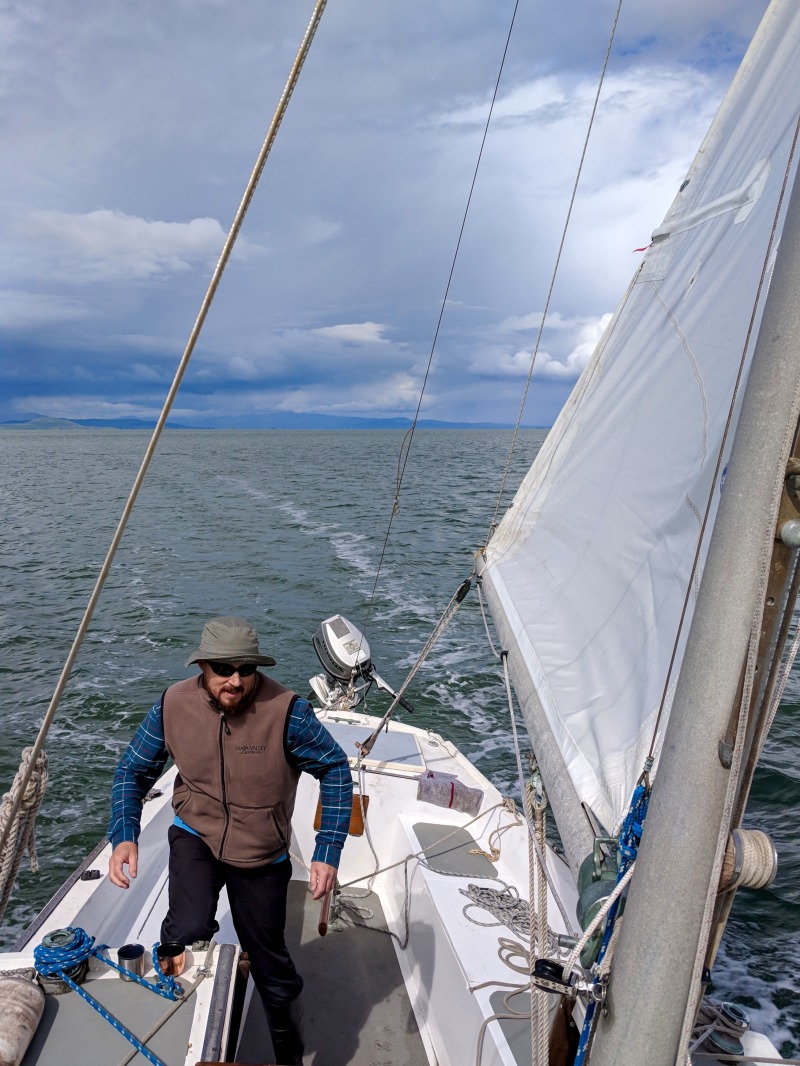
We put a little Flogging Molly on the iPod, and marveled at how such a festive holiday is also crushingly sad. ("Mocked by the wave that beats the water’s edge; There for the Grace Of God Go I.")
We hope you all had a wonderful St. Patrick’s Day.
Keeping Sailing a ‘SafeSport’
Unlike in some other sports, we haven’t heard of any reports of sexual harassment or assault at sanctioned sailboat races. But better safe than sorry. On March 7, Matthew Hill, the race administration director of US Sailing, sent the following email to the race officials the national organization certifies:
"This is to bring you up to speed on SafeSport training, which you may have already heard about. All race officials are required to be trained by the end of the year.
"This free, 90-minute online course will help all of us protect sailors from emotional, physical and sexual abuse, as well as other types of misconduct. It helps raise awareness about misconduct in sport and provides training and resources for individual and organizational members, athletes, officials, coaches, parents and volunteers.
"The attached letter and ‘How-To’ guide explain how the new requirements apply to you and how to access the training. Briefly:
- Candidates applying for initial certification and officials renewing their certification must complete SafeSport training before certification is granted.
- Officials serving at US Sailing championships must complete the training before being appointed.
- Officials not due to renew their certification this year must complete the training by December 31, 2018.
- US Sailing and the Race Administration office strongly urge you to complete the training as soon as possible, even if you are not due until the end of the year. The training is good for 24 months, and can be renewed by taking an abbreviated refresher course.
"Please read the attached letter and guide carefully. If you have questions, please start with your RAJ or ARO. They will be able to help you. Of course, we are always available to answer your questions as well."
The letter and guide to which Hill refers can be found here: www.ussailing.org/safety/safesport.
About Those Doublehanded Races
Winter takes her last breath, as tomorrow is the first day of spring. With spring, the Golden Gate opens to offshore racing. Kicking off the season, the Bay Area Multihull Association will run their doublehanded races out the Gate on Saturday, March 24.
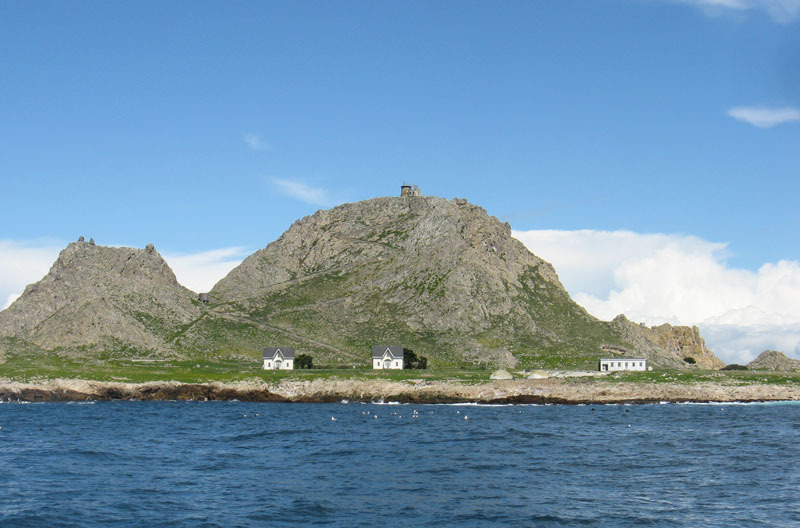
Pat Broderick, who will sail his Wyliecat 30 Nancy, imparts some knowledge about the ultimate rounding mark: "San Francisco is about 28 miles over the horizon from Lighthouse Hill. The old lightkeepers’ houses are now used by the bird observatory folks. Southeast Farallon Island is actually a small group of hilltops sticking out of the Gulf of the Farallones. They are on the Pacific Plate, sliding northward and originated hundreds of miles to the south. But, not to worry. They’ll still be visible from San Francisco for a few more millions of years."
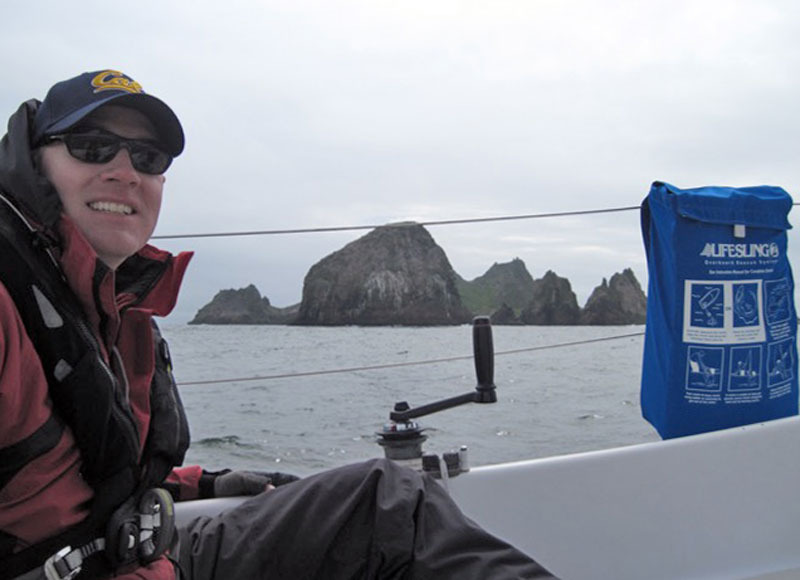
SE Farallon is the green island. There’s also the rocky Maintop Island, the small Seal Rock and several other islands and rocks. "There is a narrow crevice between the Farallon and Maintop Islands, just a small gap really, too wide too cross and too narrow to sail through.
"The break in Maintop Bay is the most dangerous part of sailing around the island; when the seas are really up, it can break nearly half a mile out — and the break can be nearly 50 feet high, slamming into the cliffs a hundred feet up. The rock face is polished.
"On Saturday we will round the end of Maintop Island, and then sail to the south of Seal Rock. It usually takes about half an hour just to sail around." A 2-knot ebb will give the fleet an assist out the Gate this year.
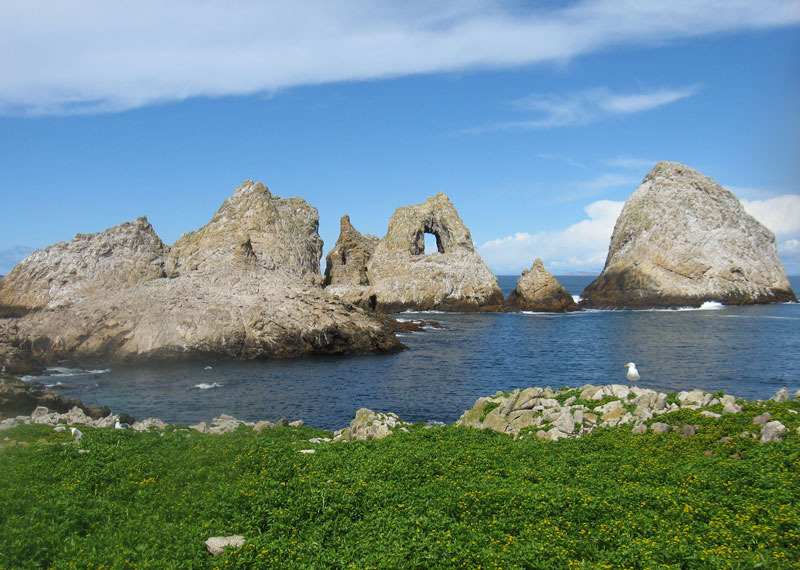
"While sailing in the Gulf of the Farallones we constantly monitor the sea state. On the way out, we face the oncoming swells, but on the return they come over the left side of our stern. Getting caught by a ‘sneaker wave’ can result in a cockpit full of water and wet foulies, and it’s dangerous. But, surging down the face of a large swell can produce boat speeds in the mid-teens, so we do try to take advantage of that."
If conditions are too gnarly at the islands, or if teams want to venture out the Gate but not go the whole distance to the islands, they have a choice of four shorter courses. Regatta Chair Bob Naber explains: "If you’re in the Doublehanded Farallones and you want to drop out you can go home or enter one of those shorter courses. If you’re past the Weather Buoy same thing; now there are three choices. Sea Buoy (Lightship) has two shorter courses. G7 is the first channel marker on the inside on the north. Go home or enter the Race to the Boundary Line. (The Boundary Line is technically an in-the-Bay race. It’s nominally the COLREGs line.)" Navigating any of the shorter courses is simple: the boat must simply tag the given longitude, not sail around a buoy.
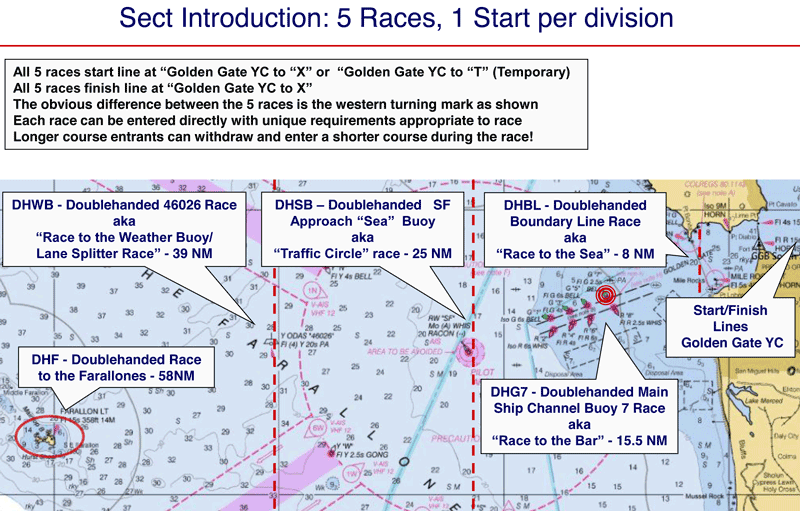
Equipment and education requirements and the entry fee vary depending on the course each skipper signs up for. The cost will increase after today and again following the skippers’ meeting, which will be held at Oakland Yacht Club in Alameda this Wednesday, March 21, with doors opening at 5:30 p.m. Included will be a DSC radio demo; folks from the Pacific Cup will be on hand as well.
Friends, family and fans will be able to track some of the competitors on Jibeset.
